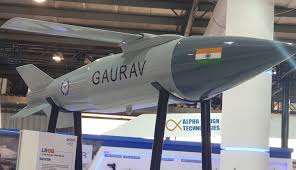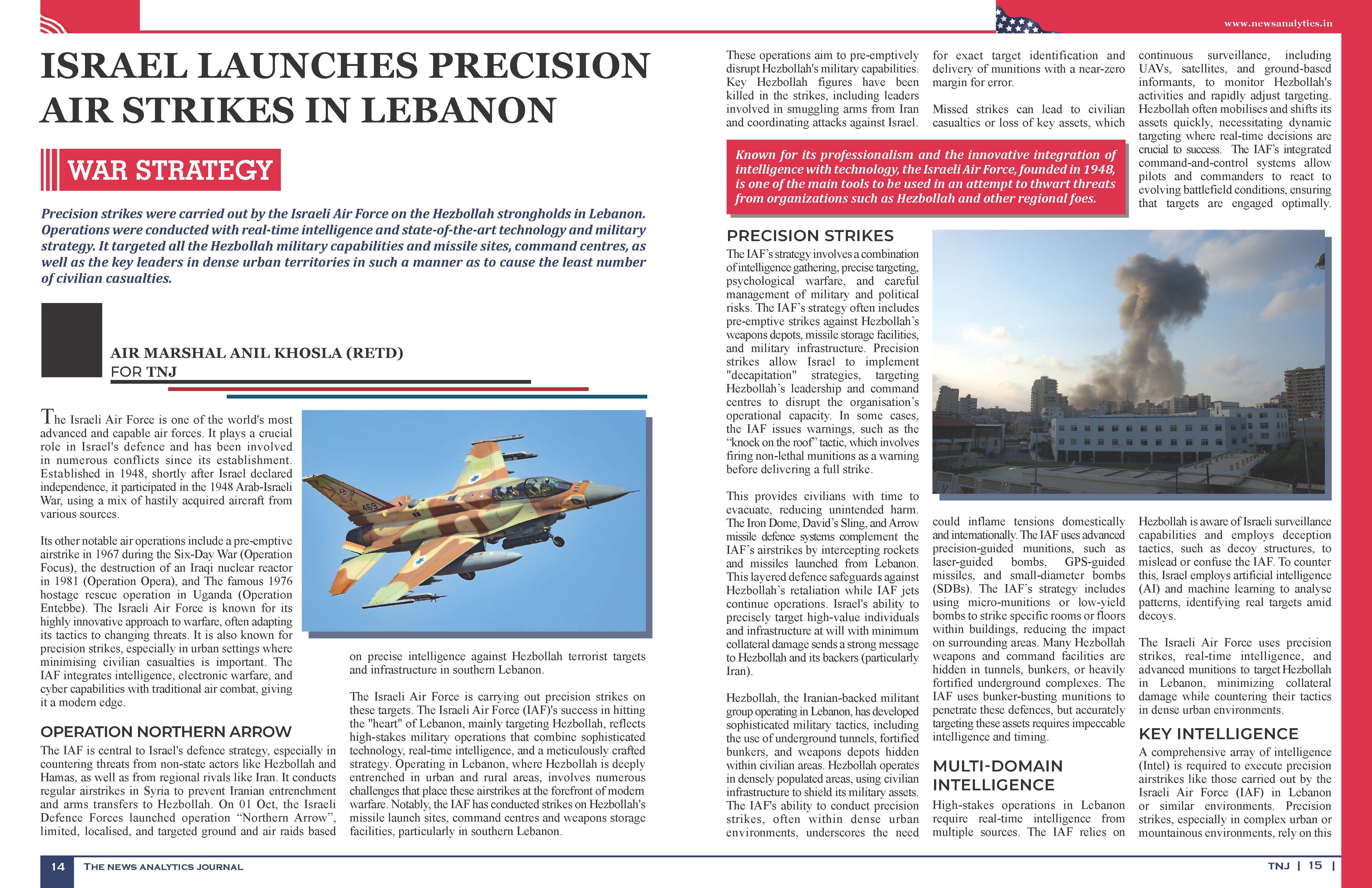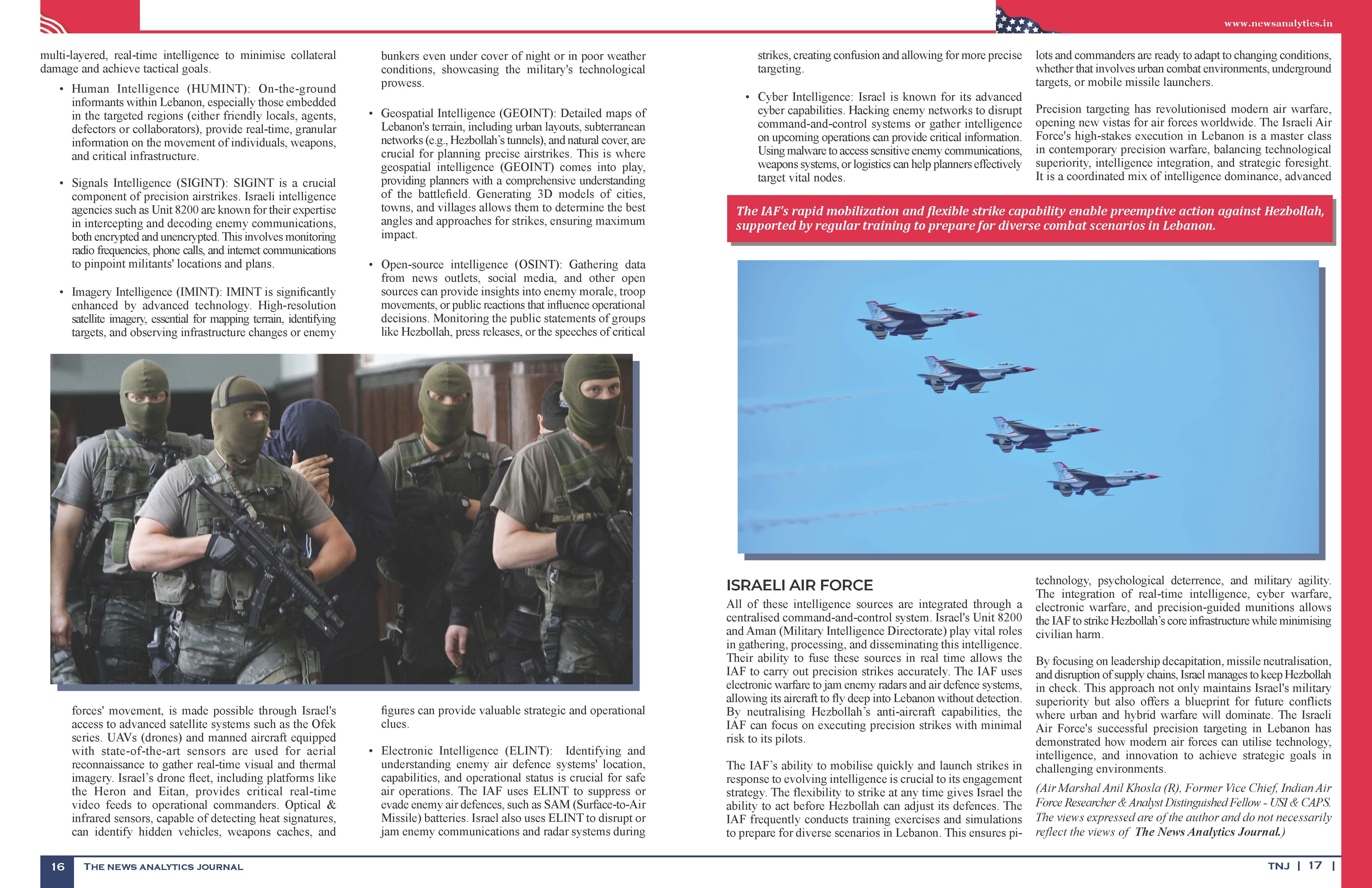My Article was published on the EurasianTimes Website
on 13 April 25.
In early April 2025, India successfully tested two indigenously developed glide bombs. The first, Long-Range Glide Bomb (LRGB) named “Gaurav,” was tested between April 8 and 10, 2025, from a Sukhoi Su-30 MKI fighter jet of the Indian Air Force (IAF). This 1,000-kg class bomb, designed by the Defence Research and Development Organisation (DRDO) in collaboration with Research Centre Imarat, Armament Research and Development Establishment, and Integrated Test Range, Chandipur, demonstrated a range close to 100 kilometers with pinpoint accuracy. The trials involved multiple warhead configurations and targeted a land-based site on an island, paving the way for its induction into the IAF. Defence Minister Rajnath Singh and DRDO Chairman Dr. Samir V. Kamat praised the achievement, highlighting its role in enhancing India’s standoff strike capabilities and self-reliance in defence technology.
The second was the lightweight “Glide” bomb, called the SAAW (Smart Anti-Airfield Weapon), which the IAF and DRDO test-fired in Odisha. The SAAW is a lightweight, precision-guided bomb designed to target enemy airfields, runways, bunkers, and other reinforced structures at ranges up to 100 kilometers. Weighing approximately 125 kilograms, it features advanced guidance systems, including electro-optical sensors, for high accuracy. The weapon has been integrated with platforms like the Jaguar and Su-30 MKI, with plans to equip it on the Dassault Rafale and HAL Tejas MK1A. Three tests were carried out under varying release conditions and ranges, all successful. The DRDO Chairman announced that the SAAW is set for imminent induction into the armed forces, enhancing India’s precision-guided munitions arsenal.
These developments underscore India’s push toward indigenous defence solutions amid regional competition. Both bombs offer cost-effective, accurate, and standoff strike options to engage targets while keeping aircraft beyond enemy air defences. In the ever-evolving landscape of modern warfare, long-range glide bombs have emerged as a transformative technology, blending precision, affordability, and strategic flexibility. These munitions, designed to glide over extended distances to strike targets with pinpoint accuracy, have redefined how militaries project power, neutralise threats, and minimise risks to personnel and assets.
Long-Range Glide Bombs
Long-range glide bombs, sometimes called standoff glide munitions, are unpowered or minimally powered precision-guided weapons that rely on aerodynamic lift to travel extended distances after being released from an aircraft. Unlike traditional free-fall bombs, glide bombs have wings or fins that allow them to glide toward their target, often covering ranges from tens to hundreds of kilometers. They typically incorporate advanced guidance systems—such as GPS, inertial navigation, or laser homing—to ensure accuracy, even against moving or heavily defended targets.
The effectiveness of long-range glide bombs lies in their simplicity and adaptability. A typical glide bomb consists of several key components:-
-
- Warhead. The explosive payload can range from 100 kilograms to over a ton, depending on the target. Warheads may be high-explosive, bunker-busting, or fragmentation-based.
-
- Guidance System. Most glide bombs use a combination of GPS and inertial navigation for all-weather accuracy. Some advanced models incorporate laser or infrared seekers for terminal guidance, enabling strikes on moving targets.
-
- Aerodynamic Surfaces. Foldable wings or fins provide lift, allowing the bomb to glide efficiently. The glide ratio—distance travelled per unit of altitude lost—determines the weapon’s range.
-
- Control Unit. An onboard computer processes navigation data and adjusts control surfaces to keep the bomb on course.
When deployed, a glide bomb is released at a high altitude (typically 30,000–40,000 feet) and high speed. The launch aircraft’s momentum and altitude provide the initial energy, while the bomb’s wings extend to maximise the glide distance. As it descends, the guidance system corrects its trajectory, ensuring it hits within meters of the intended target. Some systems, like the U.S.’s Small Diameter Bomb (SDB) GBU-39, can achieve ranges exceeding 100 kilometers under optimal conditions.
These munitions bridge the gap between conventional bombs and cruise missiles. While cruise missiles are self-propelled and highly autonomous, they are expensive and complex. Glide bombs, by contrast, are more cost-effective.
Historical Context and Global Developments
The concept of glide bombs dates back to World War II, with early examples like Germany’s Fritz-X, a radio-guided bomb used to attack ships. However, these primitive weapons lacked the range and precision of modern systems. The development of long-range glide bombs gained momentum in the late 20th century as advancements in electronics, aerodynamics, and satellite navigation enabled greater accuracy and standoff capabilities.
The U.S. military’s Joint Direct Attack Munition (JDAM) program, introduced in the 1990s, marked a significant milestone. JDAM kits transform unguided “dumb” bombs into precision-guided munitions by adding tail fins and GPS guidance. While early JDAMs had limited range, subsequent variants like the JDAM-ER (Extended Range) incorporated foldable wings, extending their reach to over 70 kilometers. Other nations, including Russia, China, and European powers, have since developed their glide bomb systems, such as Russia’s KAB-500 series and China’s LS-6 precision-guided bombs.
Recent conflicts, particularly in Ukraine and the Middle East, have showcased the growing prominence of glide bombs. For example, Russia has extensively used glide bombs like the FAB-500-M62 with UMPK kits, allowing Su-34 and Su-35 aircraft to strike targets from beyond the reach of short-range air defences. Similarly, Western-supplied glide bombs, such as France’s AASM Hammer, have been employed by Ukraine to target Russian positions with high precision.
Strategic Advantages
Long-range glide bombs offer several strategic benefits that make them indispensable in modern warfare:-
-
- Standoff Capability. Gliding bombs allow aircraft to strike from beyond the range of enemy air defences, reducing the risk to pilots and platforms. This is particularly valuable against adversaries with sophisticated surface-to-air missile systems.
-
- Cost-Effectiveness. Compared to cruise missiles, which can cost millions per unit, glide bombs are far cheaper. For example, a JDAM-ER kit costs around $20,000–$40,000, making it a budget-friendly option for precision strikes.
-
- Versatility. Glide bombs can be tailored to various targets, from fortified bunkers to mobile convoys. Modular warheads and guidance systems allow militaries to adapt them for specific missions.
-
- Mass Deployment. Because they are relatively inexpensive and easy to produce, glide bombs can be used in large numbers to overwhelm defences or saturate key targets.
-
- Reduced Collateral Damage. Precision guidance minimises unintended destruction, making glide bombs suitable for urban environments or near civilian infrastructure.
Challenges and Limitations
Despite their advantages, long-range glide bombs are not without drawbacks. Their unpowered nature makes them dependent on the launch platform’s altitude and speed, limiting their range compared to powered missiles. Additionally, while GPS guidance is efficient, it can be disrupted by electronic jamming or spoofing, as seen in conflicts like Ukraine, where Russian forces have employed electronic warfare to degrade GPS-dependent munitions. Glide bombs are also vulnerable to advanced air defences if launched within the interceptors’ range. For instance, systems like the Patriot or S-400 can engage glide bombs at certain altitudes and distances.
Global Proliferation and Future Trends
The proliferation of long-range glide bombs is reshaping global military dynamics. Countries like India, Turkey, and South Korea are investing heavily in indigenous glide bomb programs. At the same time, non-state actors and smaller nations seek access to these technologies through exports or reverse-engineering. This democratisation of precision strike capability could complicate future conflicts, enabling asymmetric actors to challenge stronger adversaries.
Future advancements in artificial intelligence and autonomous navigation will likely enhance glide bomb capabilities. AI-driven guidance could allow bombs to adapt to jamming or dynamically select targets in real time. Hypersonic glide bombs, which combine high speed with extended range and are also under development, promise to blur the line between bombs and missiles further.
Conclusion
Strategically, glide bombs shift the balance between offense and defence. By enabling standoff strikes, they challenge traditional air defence paradigms, forcing adversaries to invest in more advanced countermeasures. This arms race could drive up military spending and destabilise regions already prone to conflict.
Long-range glide bombs represent a pivotal evolution in precision warfare, offering militaries a cost-effective, versatile, and low-risk means of projecting power. Their ability to strike from a distance accurately has made them a cornerstone of modern arsenals, from superpowers to emerging nations. However, their proliferation and potential for misuse underscore the need to consider their ethical and strategic implications carefully. As technology advances, glide bombs will likely play an even more significant role in shaping the battlefields of tomorrow, balancing destructive power with the promise of precision.
Please Add Value to the write-up with your views on the subject.
For regular updates, please register your email here:-
Link to the article on the website:-
References and credits
To all the online sites and channels.
Pics Courtesy: Internet
Disclaimer:
Information and data included in the blog are for educational & non-commercial purposes only and have been carefully adapted, excerpted, or edited from reliable and accurate sources. All copyrighted material belongs to respective owners and is provided only for wider dissemination.
References:–
- Press Information Bureau (PIB), Government of India. “Successful Flight-Test of Indigenous Glide Bombs ‘Gaurav’ and ‘SAAW'”. PIB, April 11, 2025.
- Defence Research and Development Organisation (DRDO), “DRDO Conducts Successful Trials of ‘Gaurav’ and ‘SAAW’ Glide Bombs”, DRDO, April 10, 2025.
- The Hindu, “India Successfully Tests Indigenous Glide Bombs ‘Gaurav’ and ‘SAAW'”, The Hindu, April 12, 2025.
- Hindustan Times, “DRDO’s ‘Gaurav’ and ‘SAAW’ Glide Bombs Set for Induction into IAF”, Hindustan Times, April 12, 2025.
- Livefist Defence, “Inside India’s Glide Bomb Program: ‘Gaurav’ and ‘SAAW’ Take Flight”, Livefist Defence, April 11, 2025.
- Observer Research Foundation (ORF), “India’s Glide Bomb Advancements: Strategic Implications and Regional Dynamics”, ORF, April 2025.
- Institute for Defence Studies and Analyses (IDSA), “Enhancing Precision Strike Capabilities: The Role of ‘Gaurav’ and ‘SAAW'”, IDSA, April 2025.
- Jane’s Defence Weekly. “DRDO’s Gaurav and Gautham: India’s Smart Glide Bombs Take Shape.” Janes.com, August 2023.
- IISS. “India’s Precision Strike Capabilities: Strategy and Deployment.” Strategic Dossier, International Institute for Strategic Studies, 2023.
- Defence Decode. “Gaurav vs Gautham: Decoding India’s New Air-Launched Precision Bombs.” YouTube / Defence Decode Channel, March 2024.
- RAND Corporation. “Emerging Military Technologies in South Asia: Glide Bombs and Beyond.” RAND Brief, 2023.



